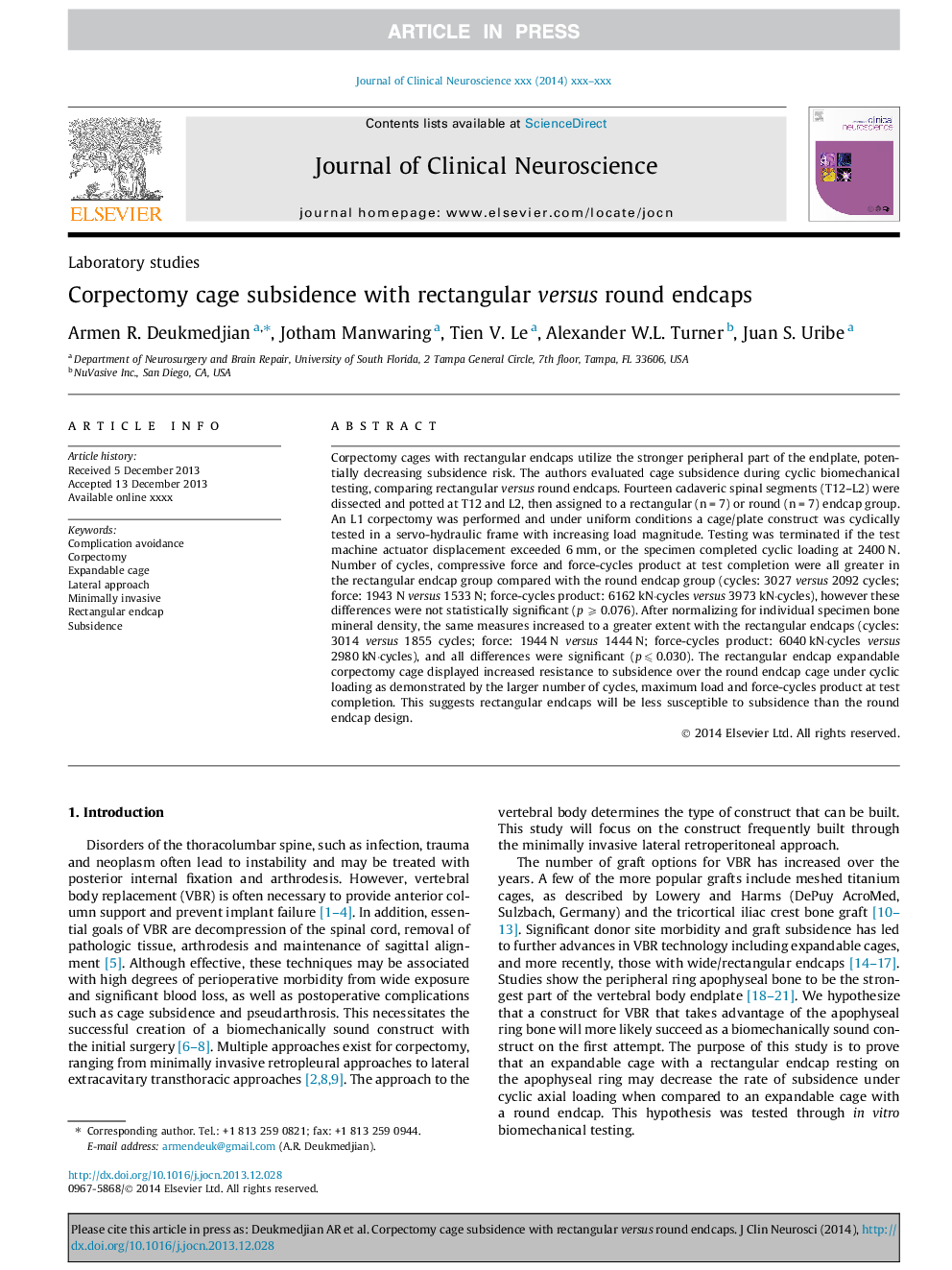| Article ID | Journal | Published Year | Pages | File Type |
|---|---|---|---|---|
| 6019615 | Journal of Clinical Neuroscience | 2014 | 5 Pages |
Abstract
Corpectomy cages with rectangular endcaps utilize the stronger peripheral part of the endplate, potentially decreasing subsidence risk. The authors evaluated cage subsidence during cyclic biomechanical testing, comparing rectangular versus round endcaps. Fourteen cadaveric spinal segments (T12-L2) were dissected and potted at T12 and L2, then assigned to a rectangular (n = 7) or round (n = 7) endcap group. An L1 corpectomy was performed and under uniform conditions a cage/plate construct was cyclically tested in a servo-hydraulic frame with increasing load magnitude. Testing was terminated if the test machine actuator displacement exceeded 6 mm, or the specimen completed cyclic loading at 2400 N. Number of cycles, compressive force and force-cycles product at test completion were all greater in the rectangular endcap group compared with the round endcap group (cycles: 3027 versus 2092 cycles; force: 1943 N versus 1533 N; force-cycles product: 6162 kN·cycles versus 3973 kN·cycles), however these differences were not statistically significant (p ⩾ 0.076). After normalizing for individual specimen bone mineral density, the same measures increased to a greater extent with the rectangular endcaps (cycles: 3014 versus 1855 cycles; force: 1944 N versus 1444 N; force-cycles product: 6040 kN·cycles versus 2980 kN·cycles), and all differences were significant (p ⩽ 0.030). The rectangular endcap expandable corpectomy cage displayed increased resistance to subsidence over the round endcap cage under cyclic loading as demonstrated by the larger number of cycles, maximum load and force-cycles product at test completion. This suggests rectangular endcaps will be less susceptible to subsidence than the round endcap design.
Related Topics
Life Sciences
Neuroscience
Neurology
Authors
Armen R. Deukmedjian, Jotham Manwaring, Tien V. Le, Alexander W.L. Turner, Juan S. Uribe,
